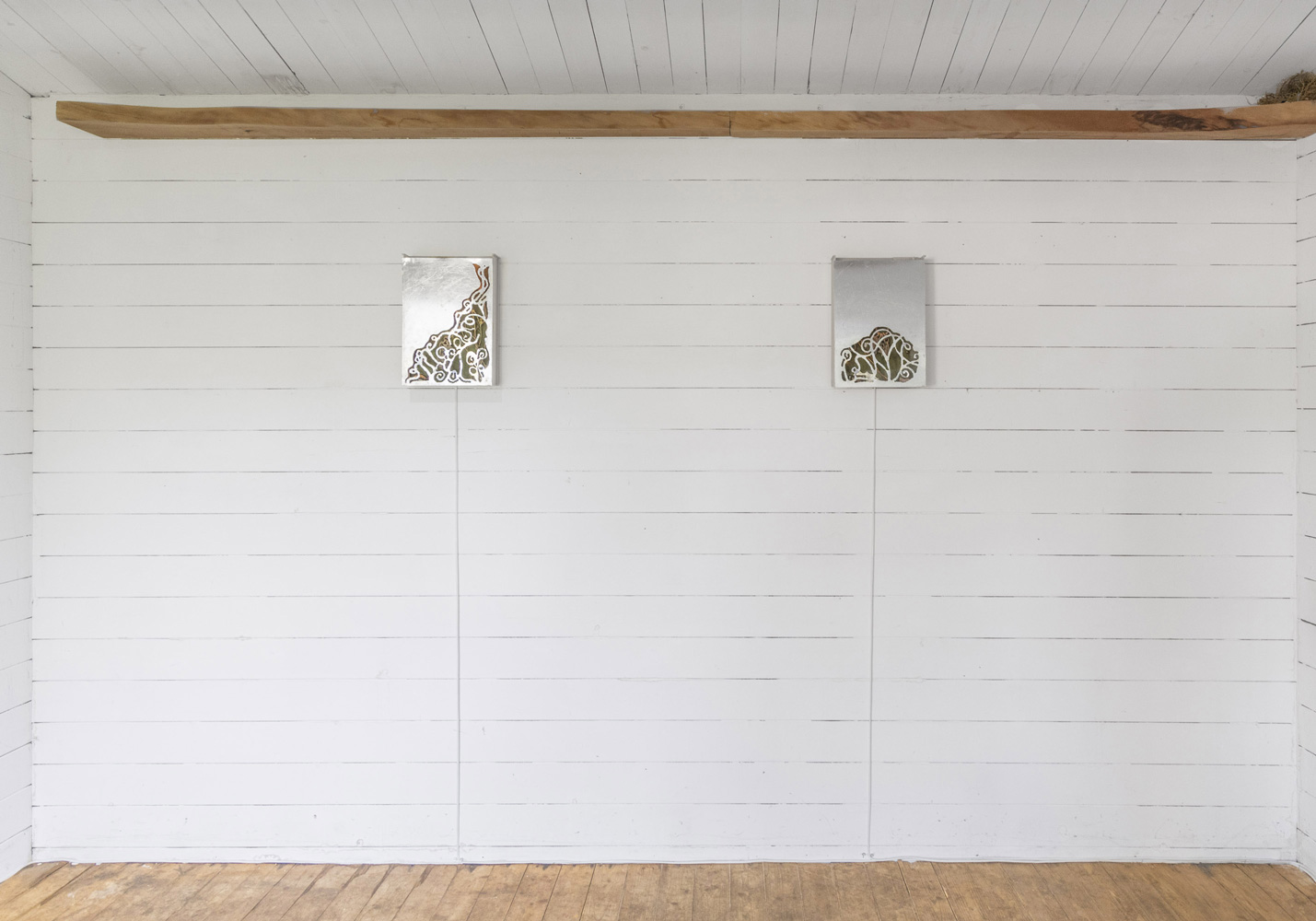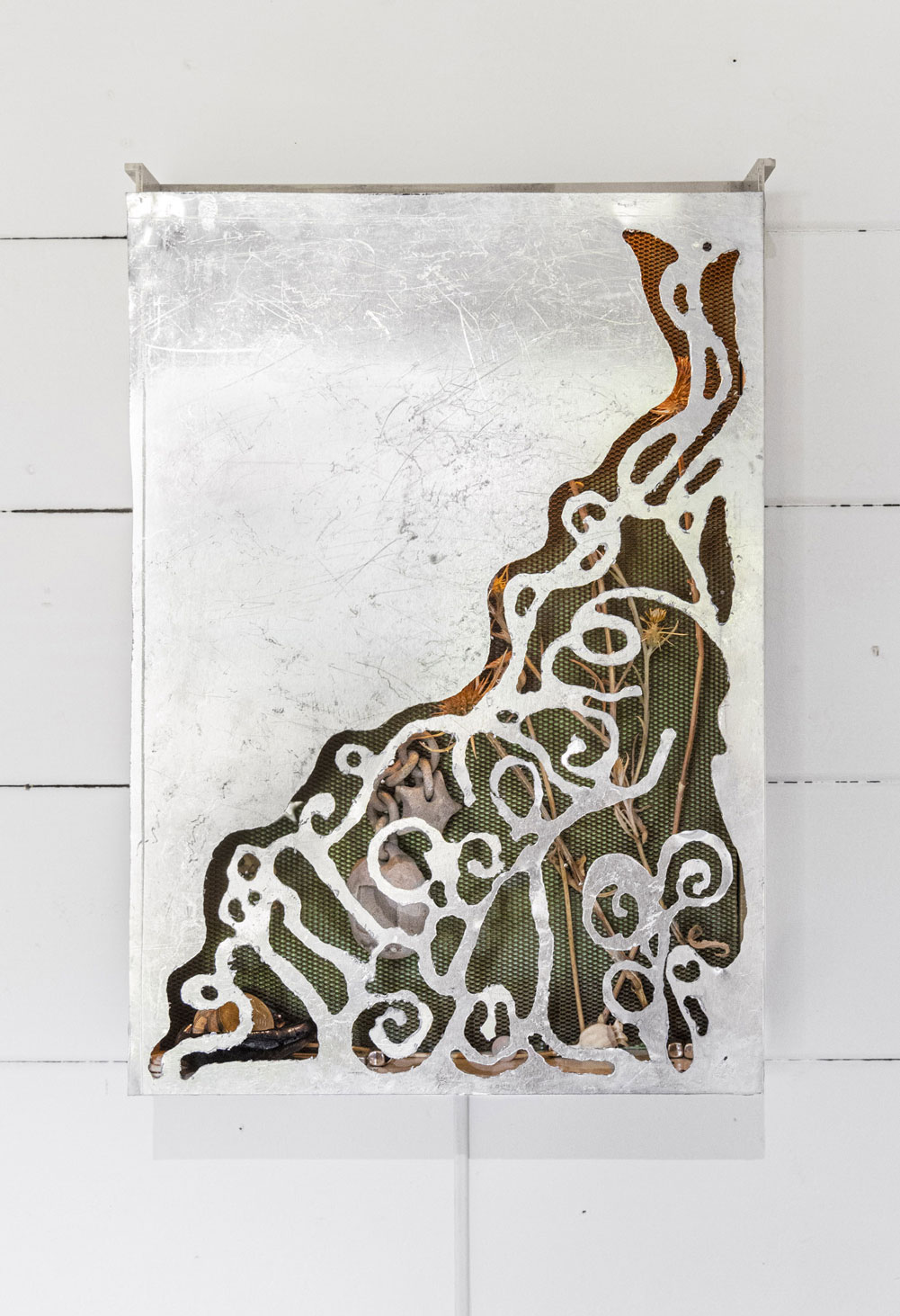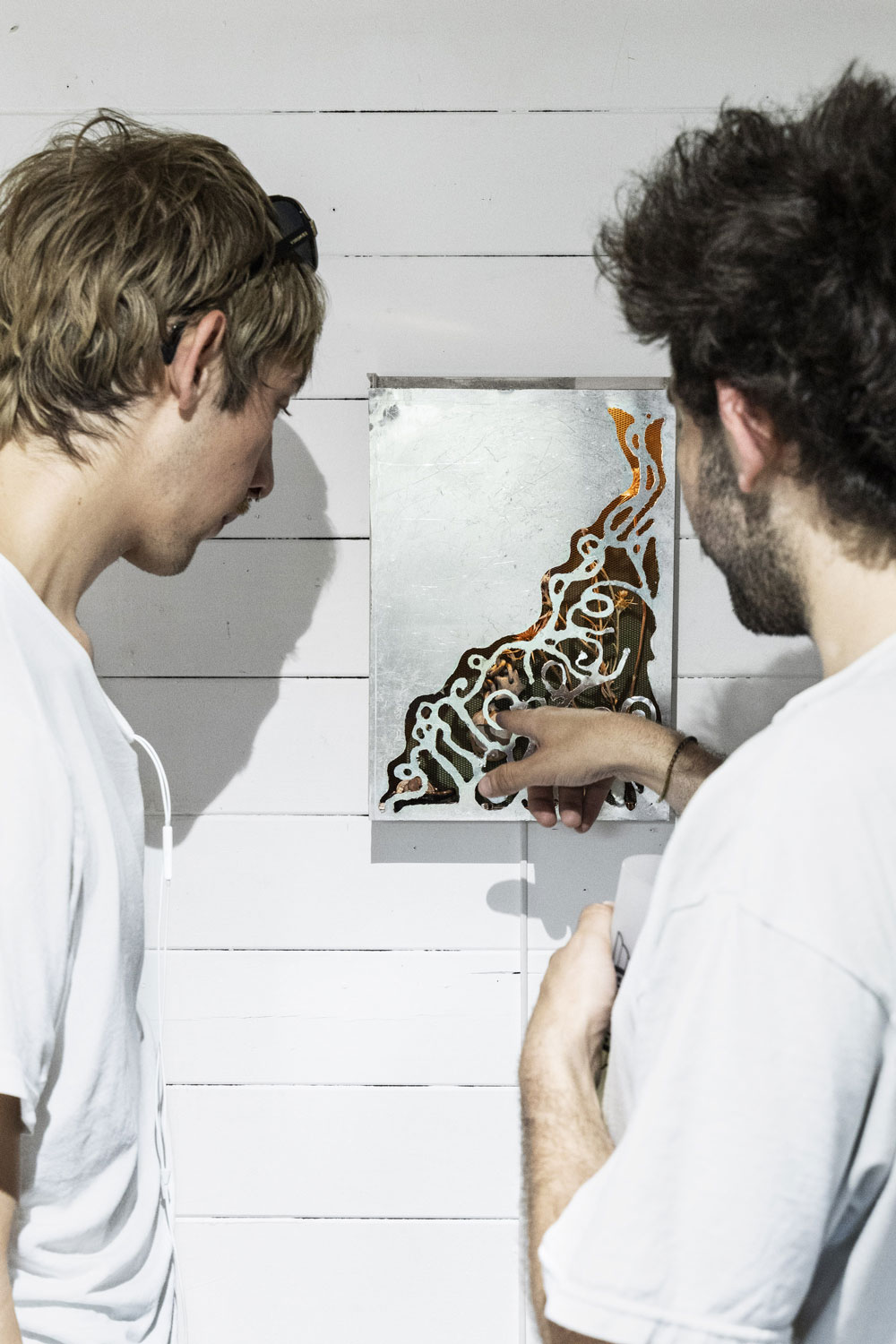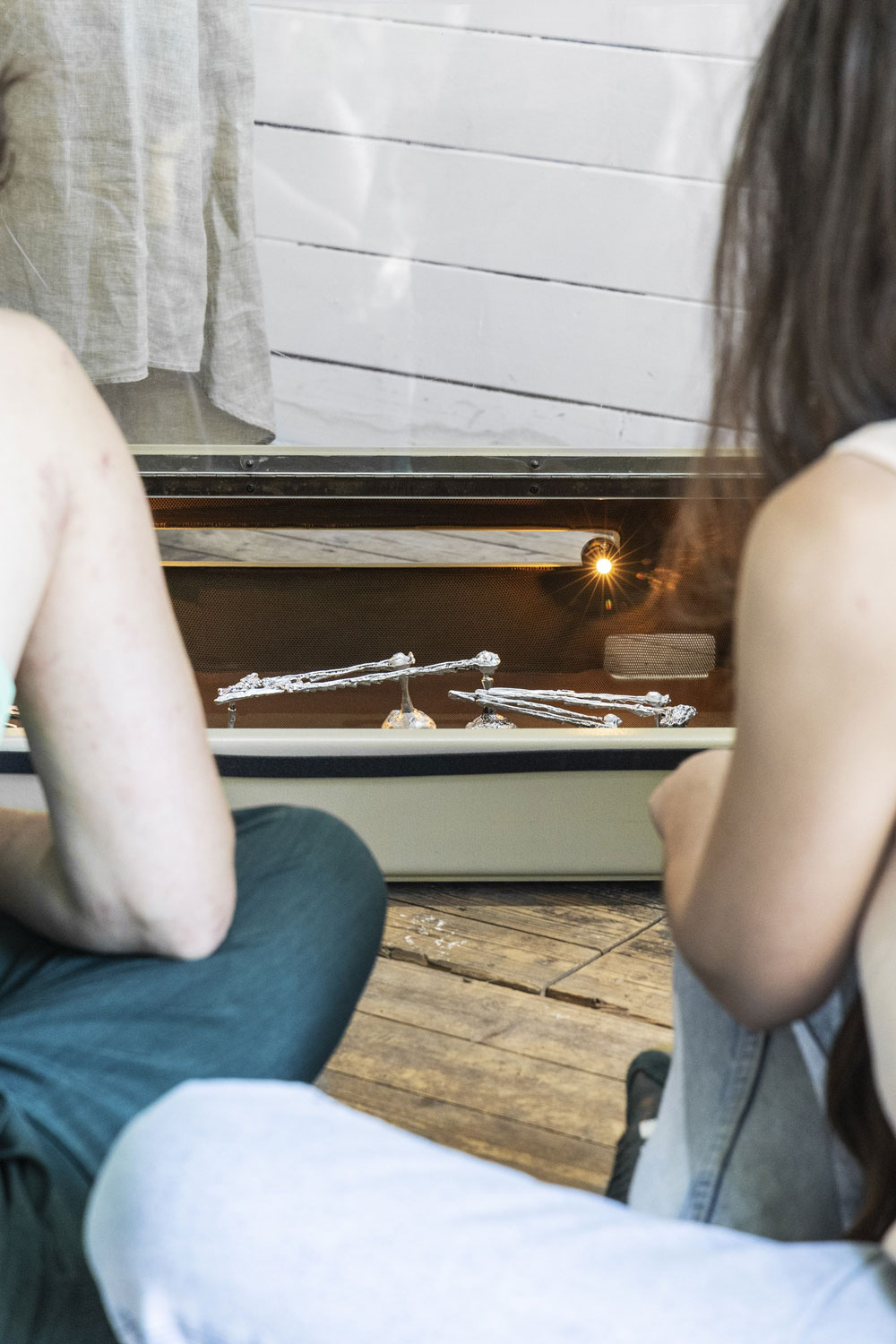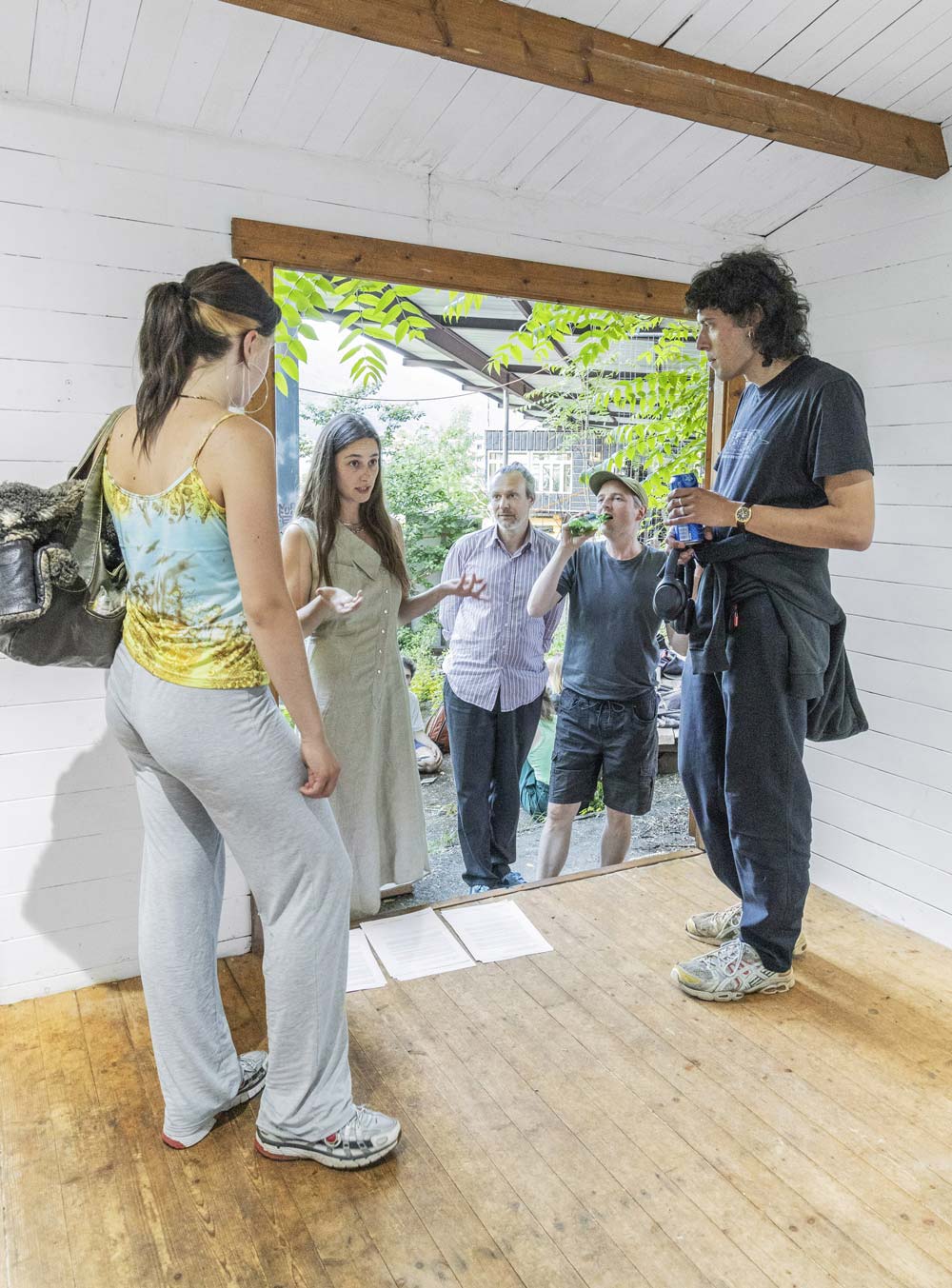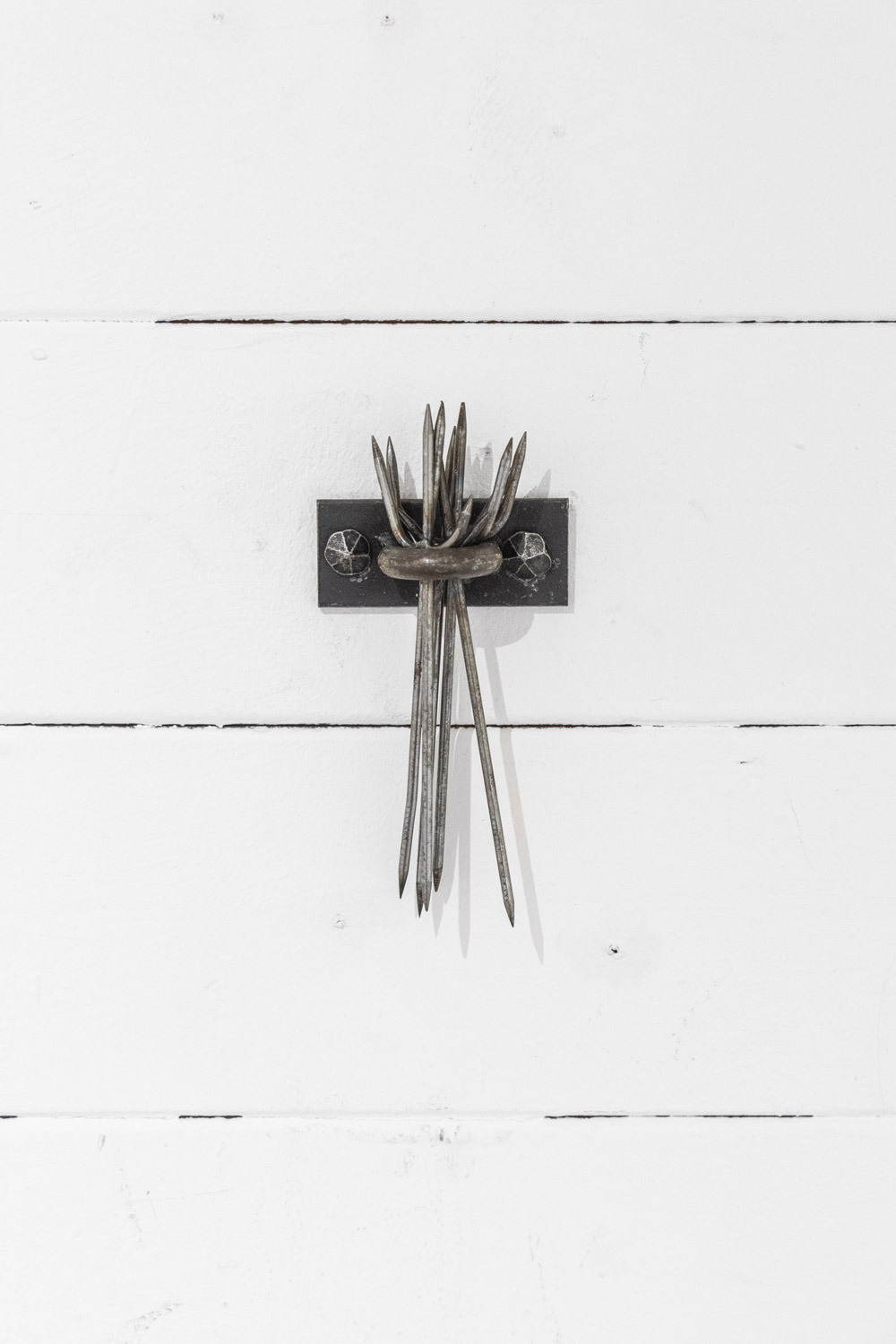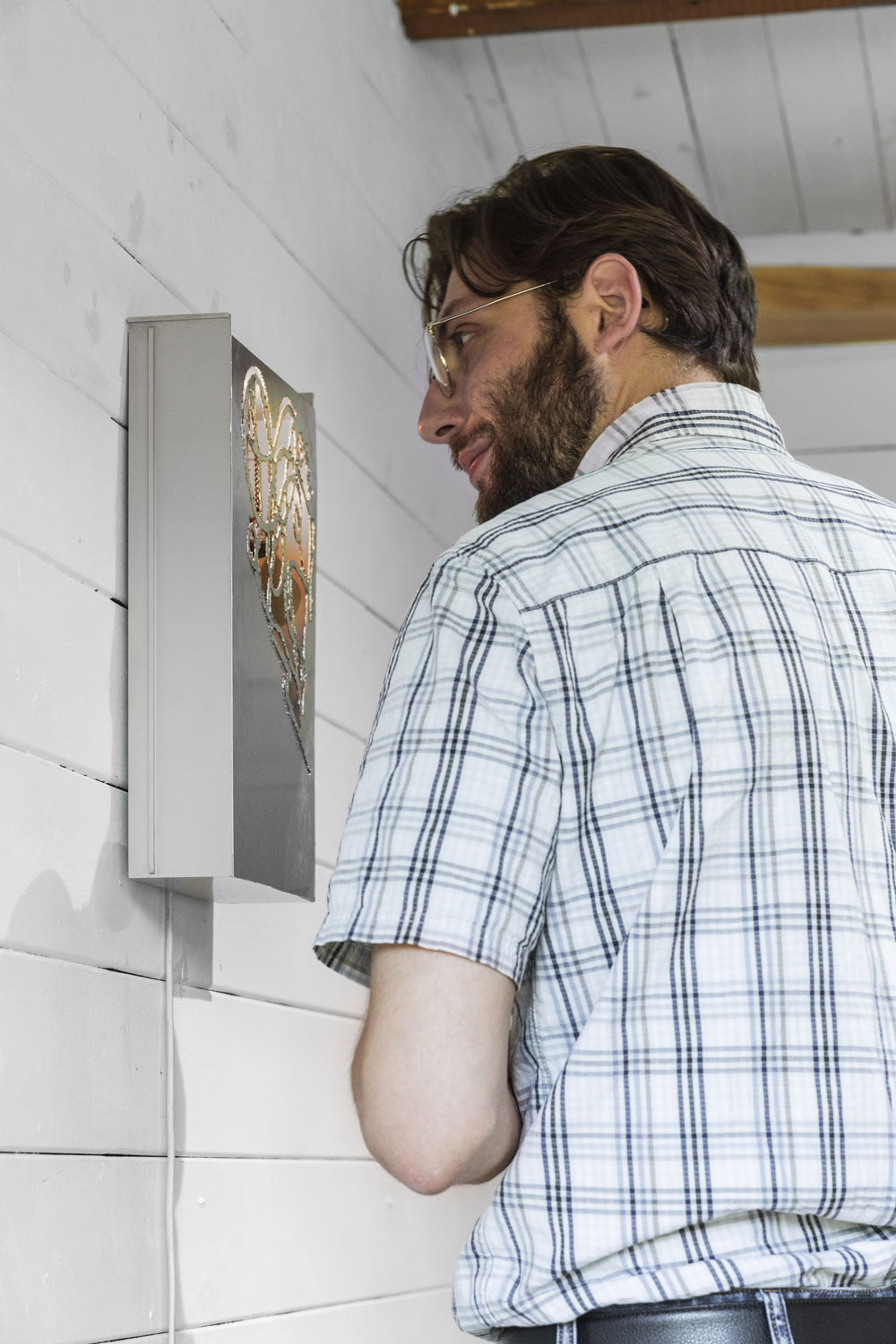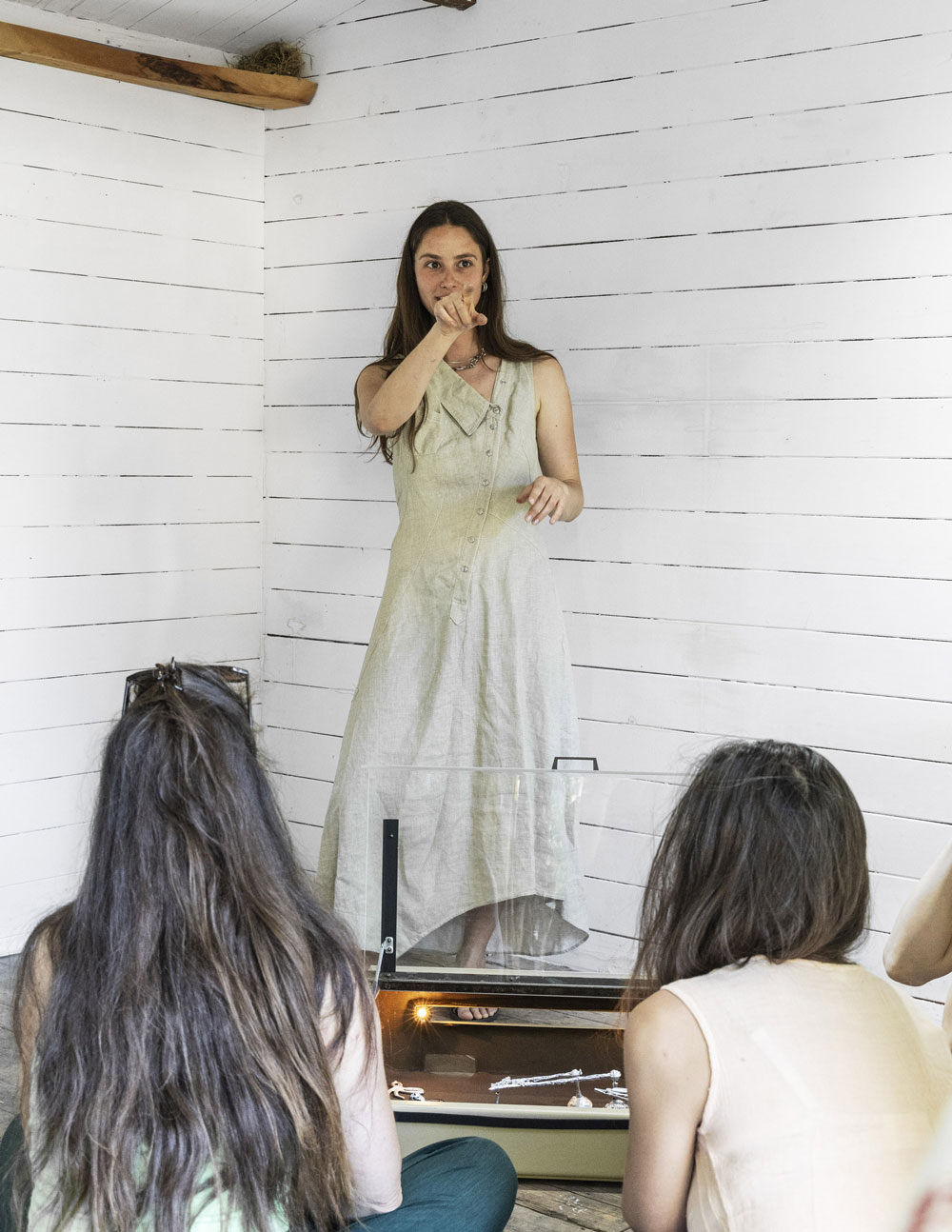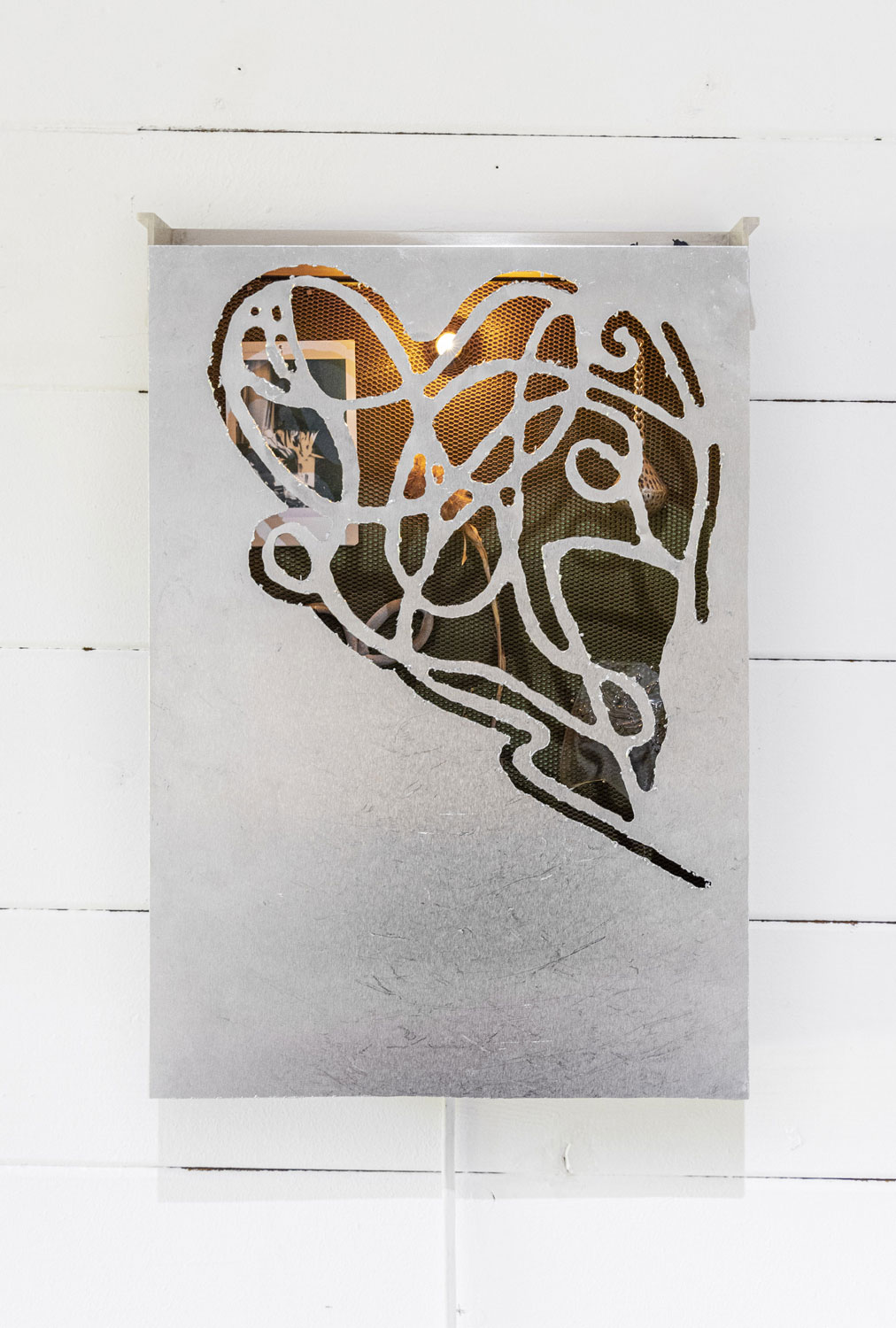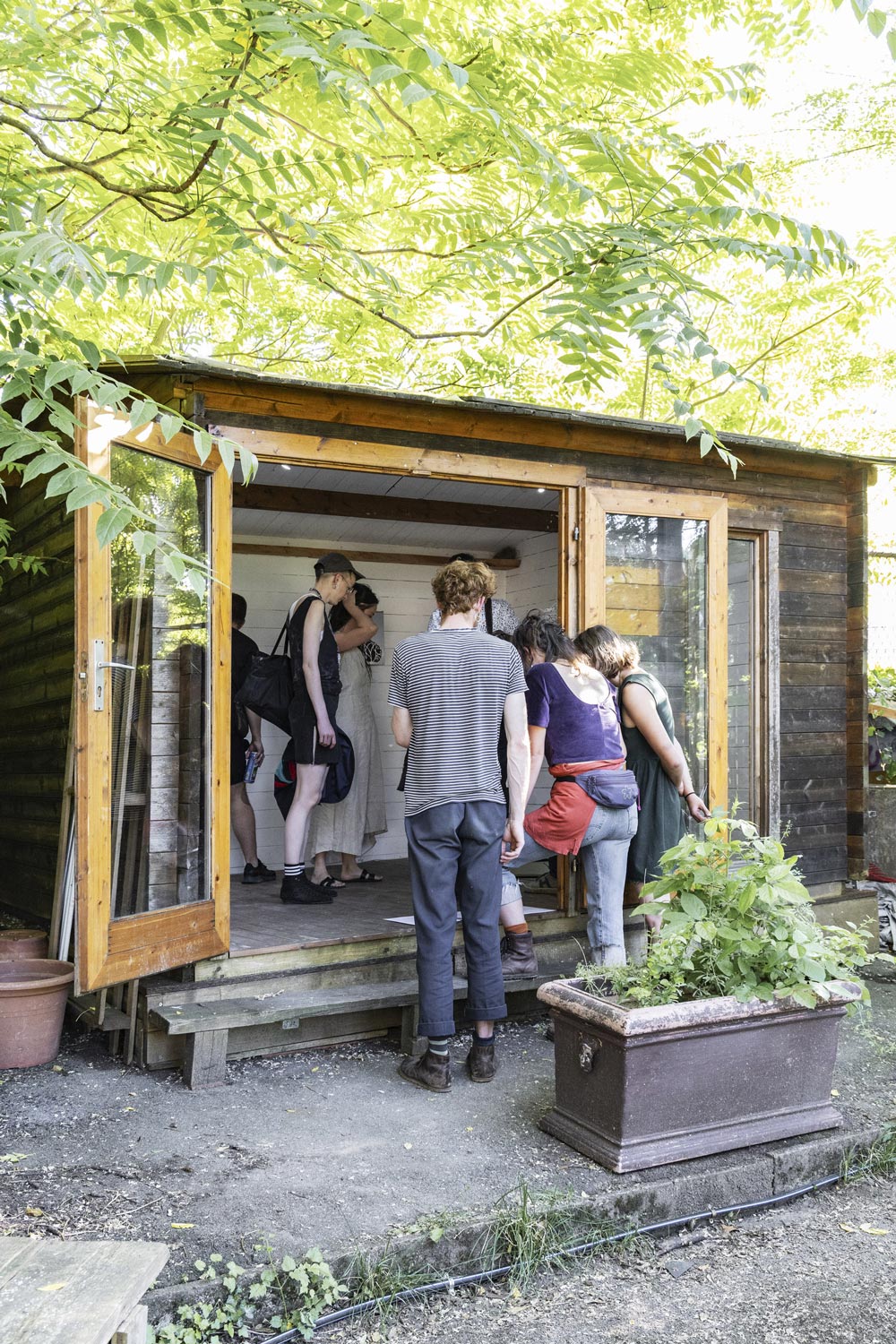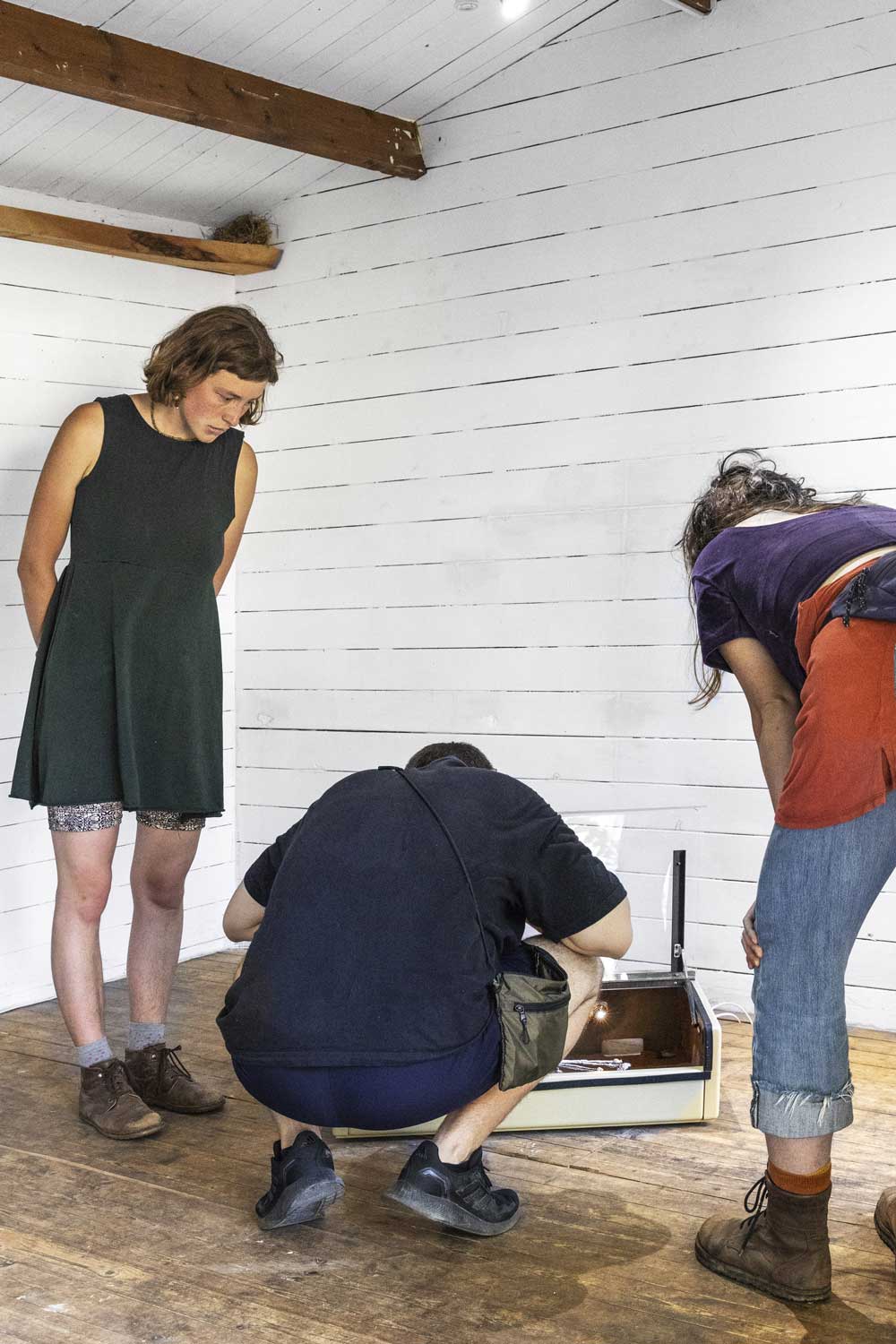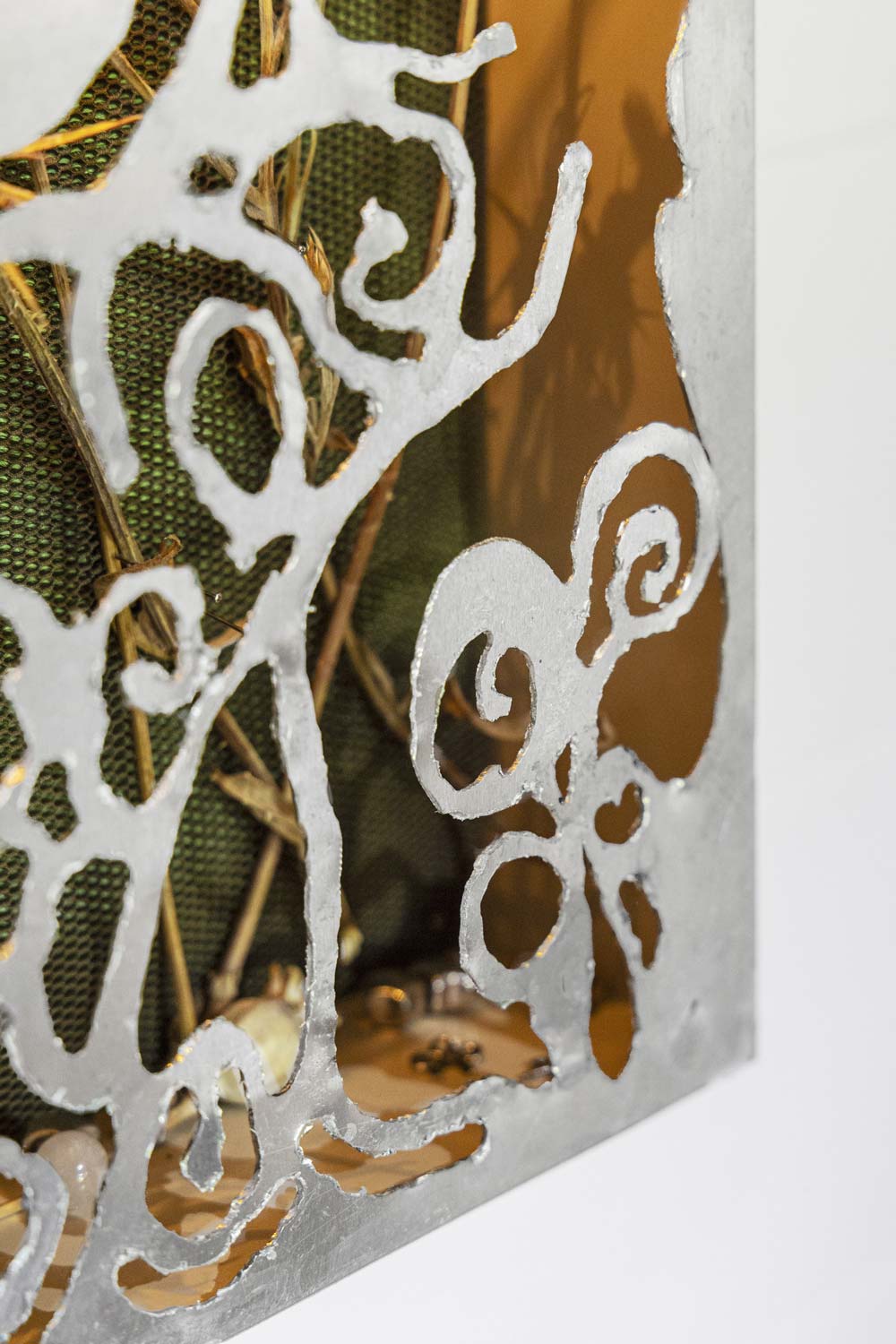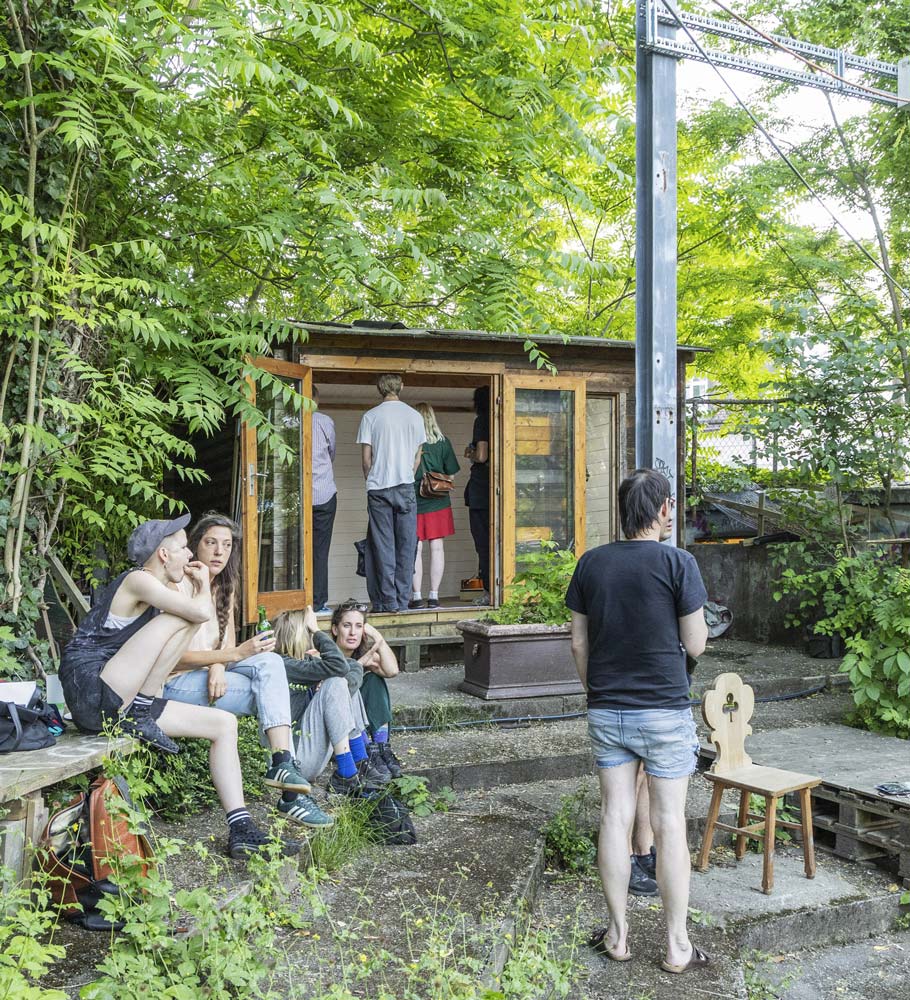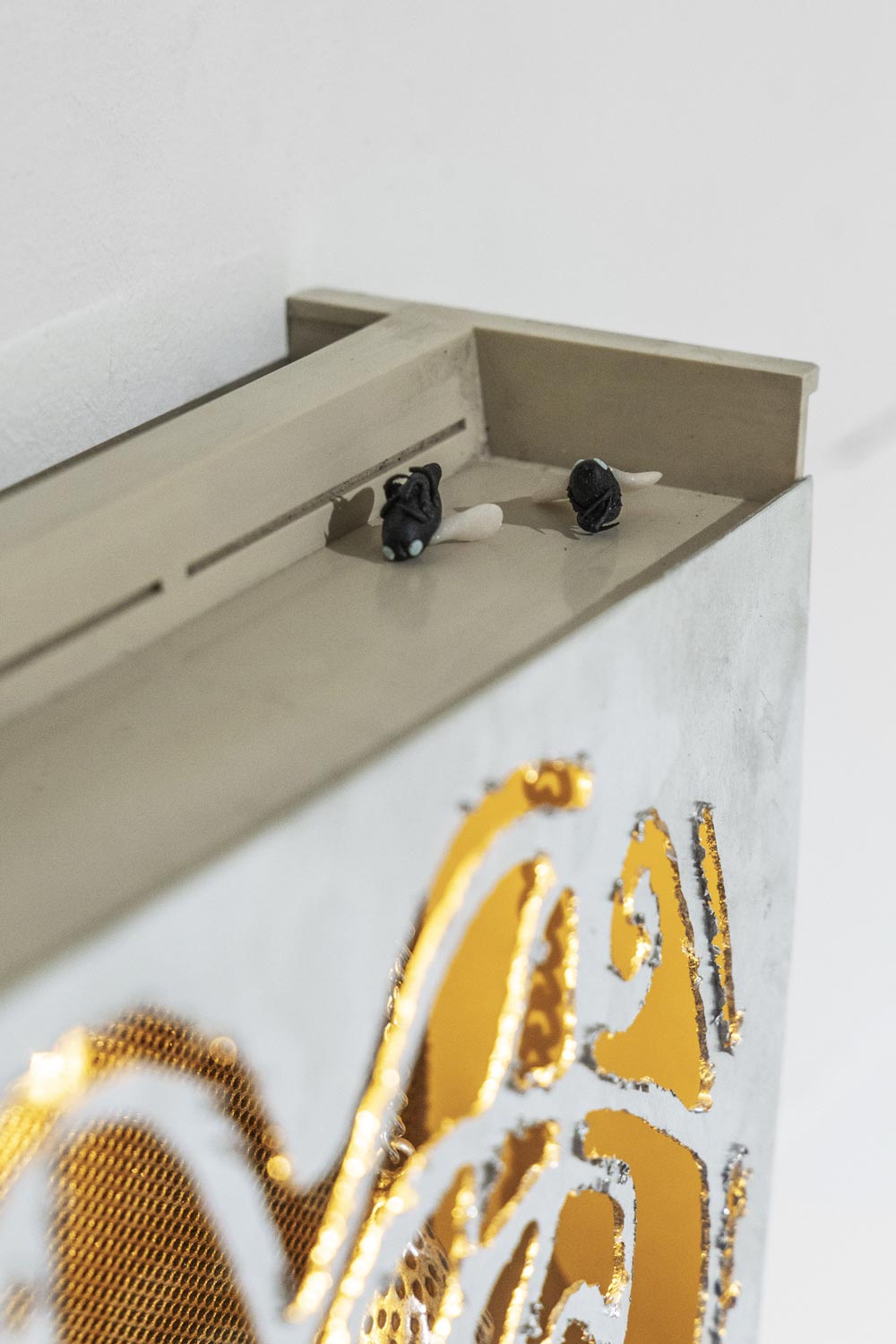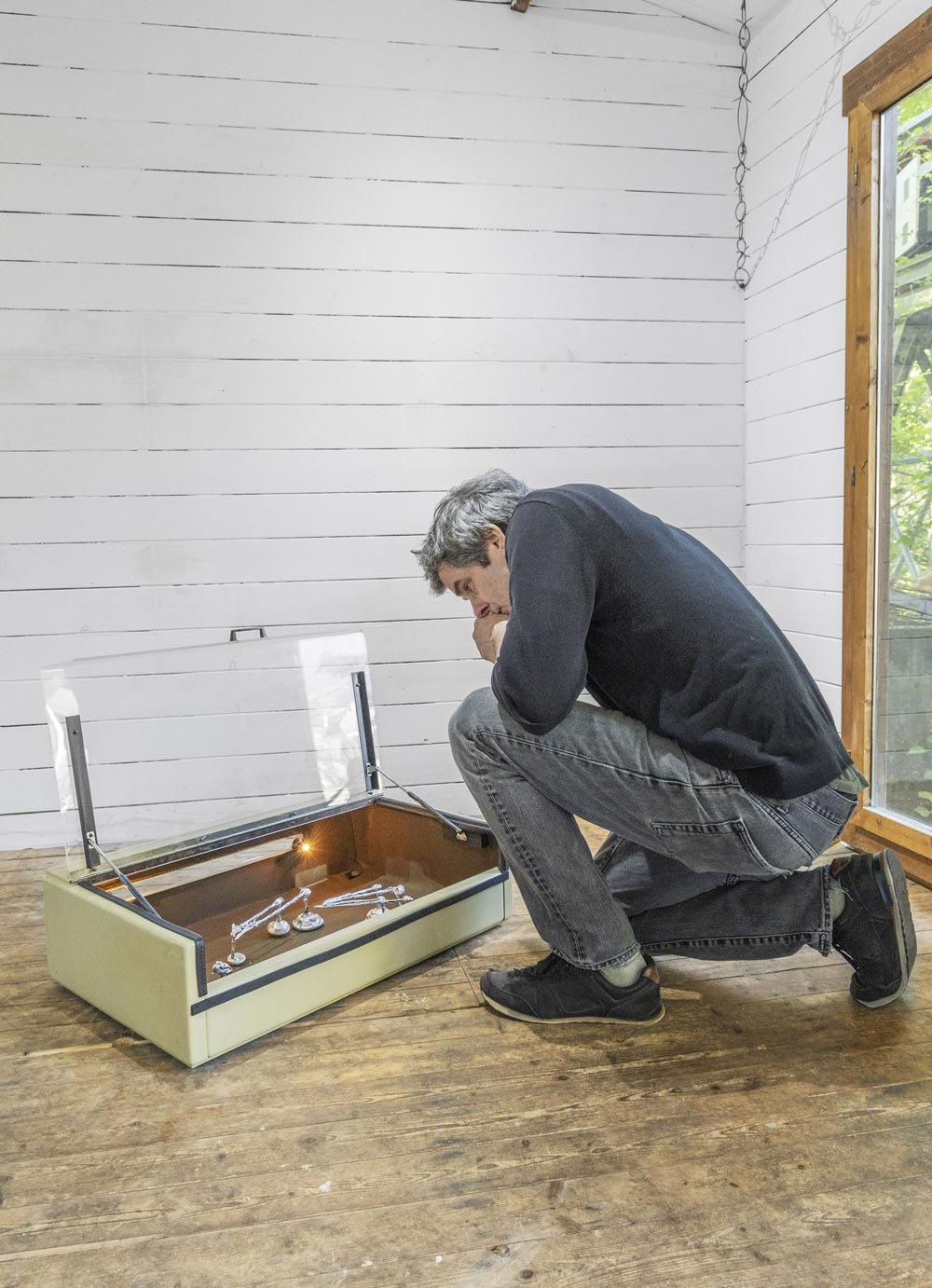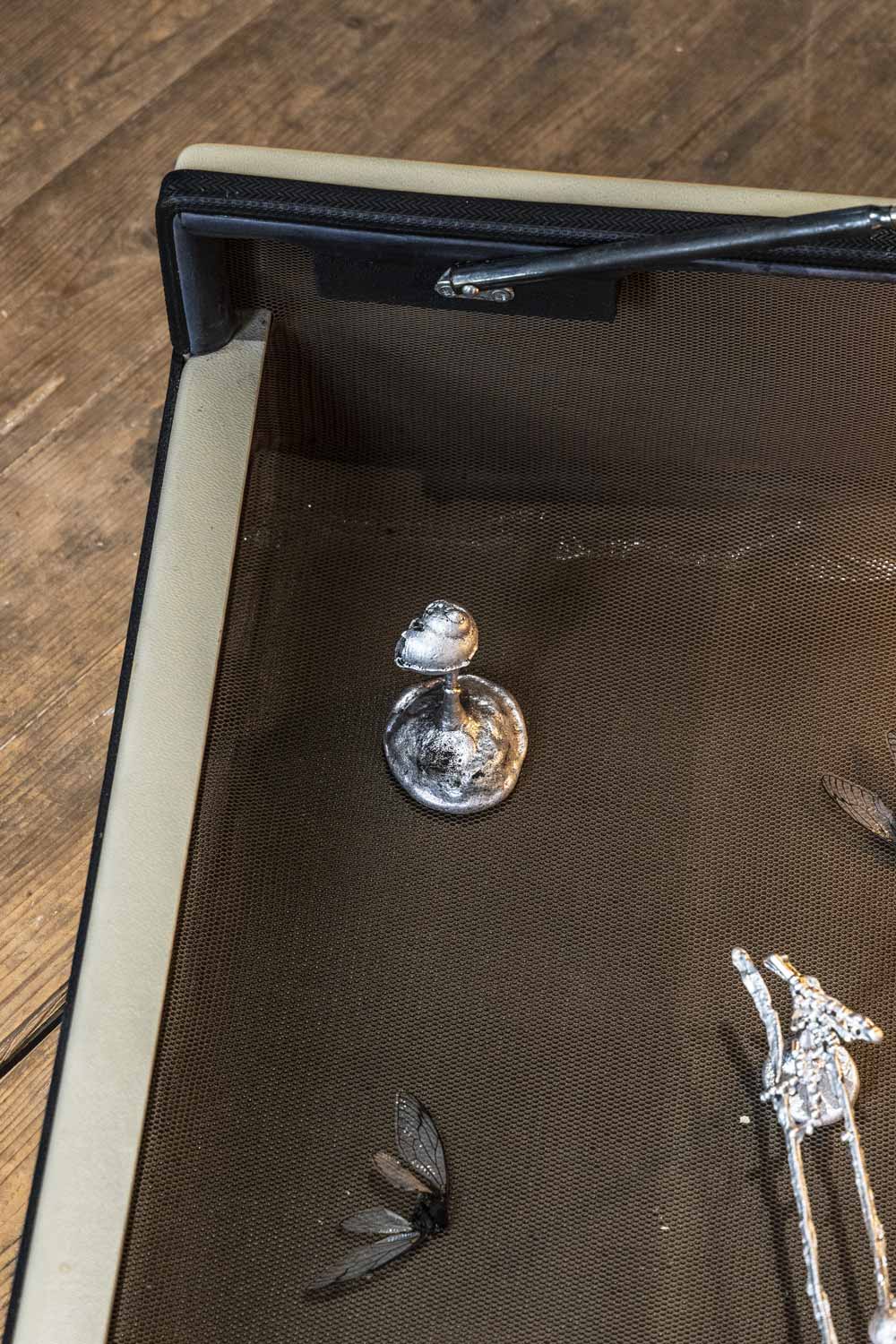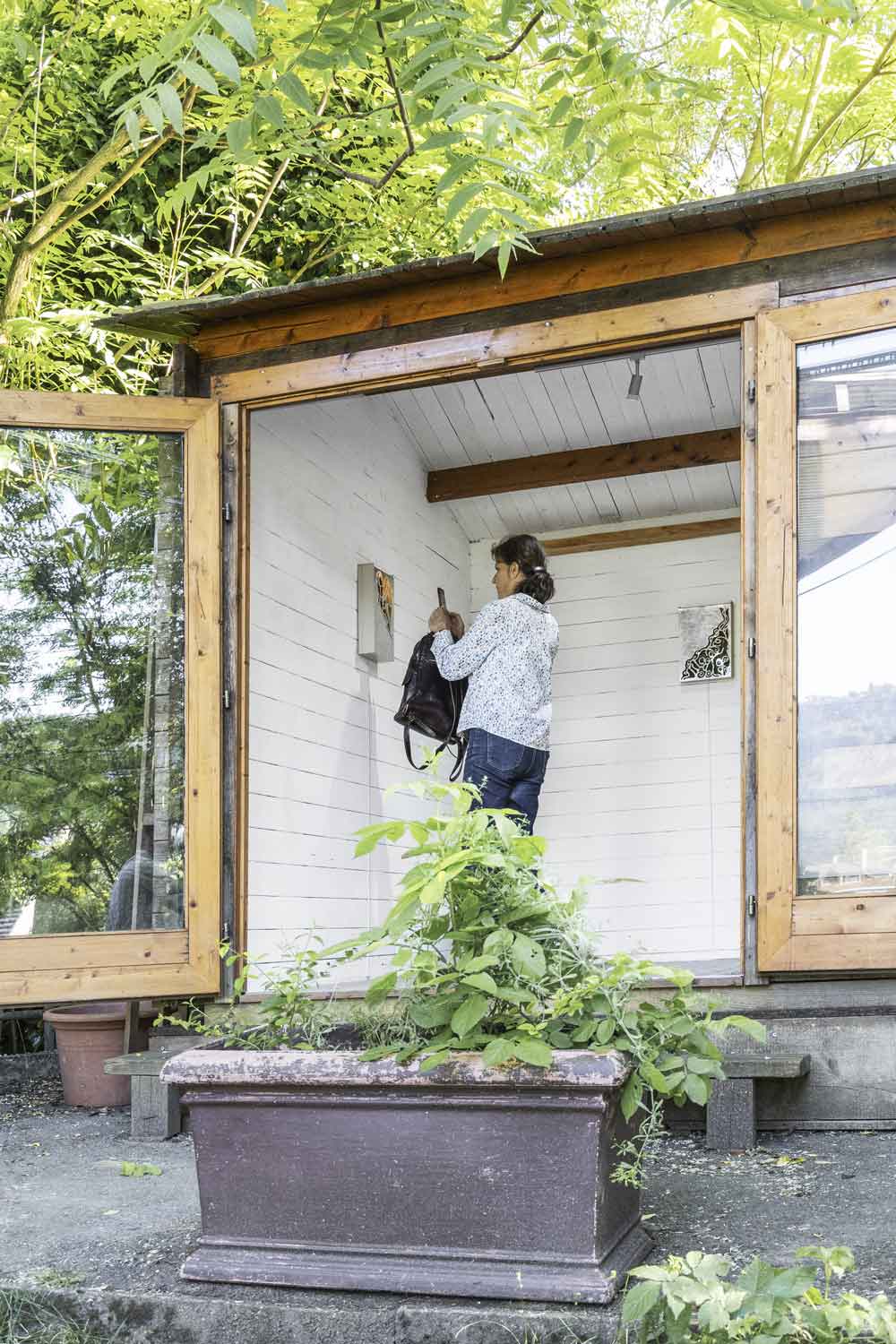Les objets parlent quand on ne regarde pas
Sophie Conus
30.05 - 05.07.2025
residency + solo exhibition
@thesoftnesss
EN The exhibition "Les objets parlent quand on ne regarde pas" by Geneva-based artist Sophie Conus takes shape after a four-week residency at Terrain Gurzelen. The artist explores personal interests developed and inspired by the site.
Objects bear memories, are traces of a life, and elements of collective stories. They are created, accumulate, get lost, exchanged, and forgotten. Following her fascination with small objects and her attraction to collections—of trinkets, found objects, dried herbs, even waste—Sophie places these artifacts at the center of the exhibition as pieces of stories. The intention is not to tell a specific narrative but rather to highlight the narrative potential that objects exude and acquire—particularly through the subversion of the primary functions of abandoned, expired objects that no longer serve in the same way.
"Fascinated by how things are made," she experiments with craft techniques including clay modeling and metal casting. In collaboration with Hugo Langlade, they developed a research project around building a foundry, autonomously and primarily using reclaimed materials. Here, some of the objects were created during the residency and are presented in the exhibition.
Immersed in the microcosm of Terrain Gurzelen, Sophie questioned the essence of the place. How does such a space, living at an alternative rhythm, thrive on the margins of urban society? What are its causes and motivations?
Urbanization is a current issue in the neighborhood, which is being torn between the limited lifespan of Terrain Gurzelen and the construction of a residential complex named "La Fleur"—ironically, the complex is, among other things, built in concrete. This construction site, located just across from the entrance of Terrain Gurzelen, seemingly represents the future of the place, which has so far managed to resist among the concrete and has symbolically developed like a weed in the cracks of society.
Deepening this metaphor as a reference in the exhibition, and inspired by works like Arnaud Pradervand's book "Mauvaises herbes," which collects and values these plants, Sophie imagines Terrain Gurzelen as a weed of society and prompts reflection on the reappropriation of urban spaces. The exhibition materializes a version of gentle resistance led by alternative projects, highlighting the artist's sensitive processes through the creation of pieces—between a curiosity cabinet and a diorama—that are awakened and accessible.
FR L’exposition « Les objets parlent quand on ne regarde pas » réalisée par l’artiste Sophie Conus, basée à Genève, prend forme après une résidence de 4 semaines au sein du Terrain Gurzelen. L’artiste aborde des intérêts personnels développés et inspirés par le lieu.
Les objets sont porteurs de souvenirs, sont les traces d’une vie et les éléments d’histoires collectives. Ils se créent, s’accumulent se perdent, s’échangent et s’oublient. Suivant sa fascination pour les petits objets et son attirance par les collections—de babioles, d’objets trouvés, d’herbes séchées, voire de déchets—, Sophie place ces artefacts au centre de l’exposition comme des morceaux d’histoires. La volonté n’est pas portée à raconter un récit spécifique, mais plutôt au potentiel de narration que les objets dégagent et acquièrent—notamment au contournement des fonctions premières d’objets abandonnés, expirés, et qui ne servent plus de la même manière.
« Fascinée par comment les choses sont faites », elle expérimente avec des techniques artisanales comprenant le modelage de la terre ou la fonte de métal. En collaboration avec Hugo Langlade, iels ont développé un projet de recherche autour de la construction d’une fonderie, de manière autonome et issue principalement de matériaux de récupération. Ici, une partie des objets ont été créés durant la résidence et sont mis en situation dans l’exposition.
Plongée dans le microcosme du Terrain Gurzelen, Sophie s’est questionnée sur l’essence du lieu. Comment un tel espace, vivant à un rythme alternatif, prospère à la marge de la société urbaine ? Quelles en sont les causes et les motivations ?
L’urbanisation est un sujet présent dans l’actualité du quartier, qui se voit tiraillé par la longévité limitée du Terrain Gurzelen face au complexe résidentiel en construction nommé « La Fleur »—ironiquement le complexe est, entre autres, bâti en béton. Ce chantier, situé juste en face de l’entrée du Terrain Gurzelen, est semblablement l’avenir du lieu, dont jusqu’à ici, a su résister parmi le béton et s’est symboliquement développé comme une mauvaise herbe dans les brèches de la société.
Approfondissant cette métaphore comme référence dans l’exposition, et inspirée par des travaux comme le livre « Mauvaises herbes » d’Arnaud Pradervand qui recueille et valorise ces plantes, Sophie imagine le Terrain Gurzelen comme une mauvaise herbe de la société et l’amène à se questionner sur la réappropriation des espaces urbains. L’exposition matérialise une version de résistance douce menée par les projets alternatifs, en valorisant les procédés sensibles de l’artiste par la création de pièces—entre le cabinet de curiosités et le diorama—éveillés et accessibles.
DE Die Ausstellung "Les objets parlent quand on ne regarde pas" der in Genf ansässigen Künstlerin Sophie Conus entsteht nach einem vierwöchigen Aufenthalt im Terrain Gurzelen. Die Künstlerin setzt sich mit persönlichen Interessen auseinander, die am Ort entwickelt und inspiriert wurden.
Objekte tragen Erinnerungen, sind Spuren eines Lebens und Elemente kollektiver Geschichten. Sie entstehen, sammeln sich, gehen verloren, werden ausgetauscht und vergessen. Ausgehend von ihrer Faszination für kleine Objekte und ihrer Neigung zu Sammlungen—von Krimskrams, Fundstücken, getrockneten Kräutern, ja sogar Abfall—stellt Sophie diese Artefakte als Stücke von Geschichten in den Mittelpunkt der Ausstellung. Die Absicht ist nicht, eine spezifische Erzählung zu vermitteln, sondern vielmehr das Erzählpotenzial hervorzuheben, das Objekte ausstrahlen und erlangen—insbesondere durch die Umkehrung der primären Funktionen von verlassenen, abgelaufenen Objekten, die nicht mehr auf die gleiche Weise dienen.
"Fasziniert davon, wie Dinge gemacht werden", experimentiert sie mit Handwerkstechniken wie Tonmodellierung und Metallguss. In Zusammenarbeit mit Hugo Langlade entwickelten sie ein Forschungsprojekt zum Bau einer Gießerei, autonom und hauptsächlich aus wiederverwendeten Materialien. Hier wurden einige der Objekte während des Aufenthalts geschaffen und in der Ausstellung präsentiert.
Eingetaucht in das Mikrokosmos des Terrain Gurzelen, stellte sich Sophie die Frage nach dem Wesen des Ortes. Wie gedeiht ein solcher Raum, der in einem alternativen Rhythmus lebt, am Rande der urbanen Gesellschaft? Was sind die Ursachen und Motivationen?
Urbanisierung ist ein aktuelles Thema im Viertel, das zwischen der begrenzten Lebensdauer des Terrain Gurzelen und dem Bau eines Wohnkomplexes namens "La Fleur" hin- und hergerissen ist—ironischerweise ist der Komplex unter anderem aus Beton gebaut. Diese Baustelle, direkt gegenüber dem Eingang des Terrain Gurzelen gelegen, stellt scheinbar die Zukunft des Ortes dar, der bisher unter dem Beton überlebt hat und sich symbolisch wie ein Unkraut in den Rissen der Gesellschaft entwickelt hat.
Diese Metapher als Referenz in der Ausstellung vertiefend und inspiriert von Werken wie dem Buch "Mauvaises herbes" von Arnaud Pradervand, das diese Pflanzen sammelt und wertschätzt, stellt sich Sophie das Terrain Gurzelen als Unkraut der Gesellschaft vor und regt zur Reflexion über die Aneignung urbaner Räume an. Die Ausstellung materialisiert eine Form sanften Widerstands, angeführt von alternativen Projekten, und hebt die sensiblen Prozesse der Künstlerin durch die Schaffung von Werken—zwischen einem Kuriositätenkabinett und einem Diorama—hervor, die erweckt und zugänglich sind.
crédits photo : Aude Mayer
graphic design : Studidiot
Supported by FMAC, Oertli Stiftung, Pro Helvetia, Stadt Biel, Kanton Bern, Burgergemeinde Bern, Stiftung Tempratio & Group GVB. Merci !
